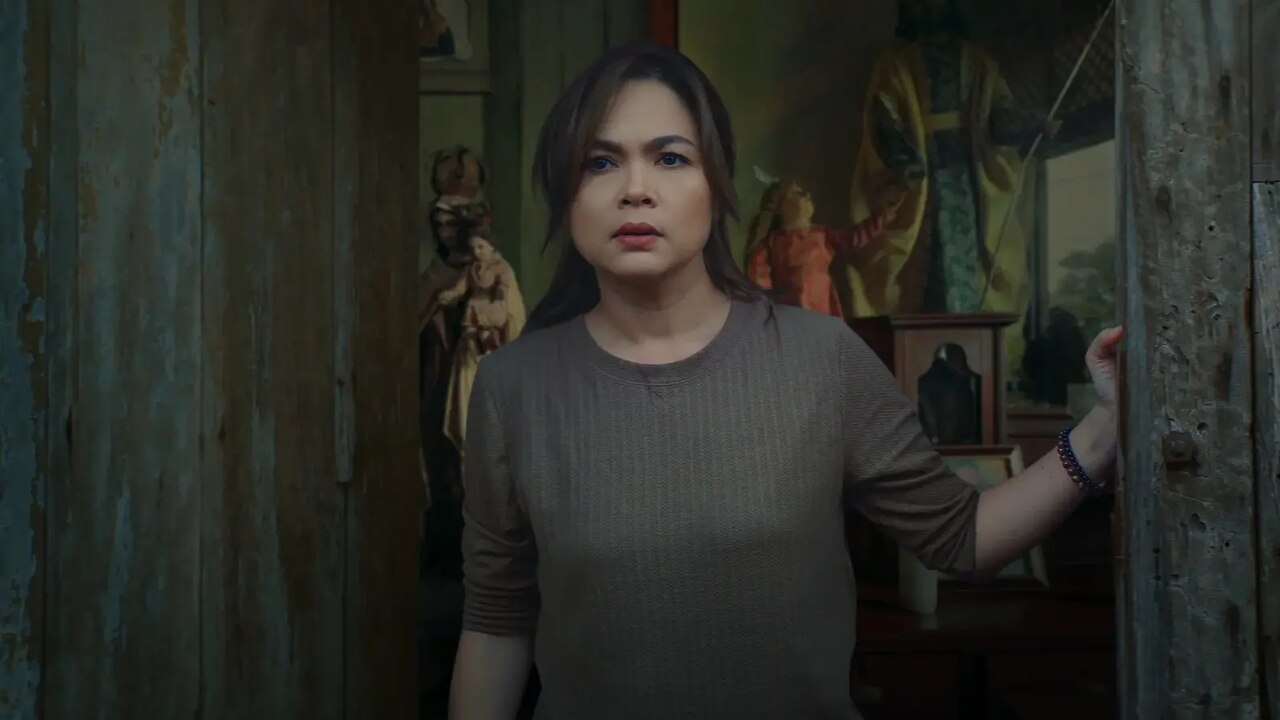
The film Scarecrow, directed by Chito S. Roño and starring Judy Ann Santos, takes place in a gloomy house filled with buried memories and gentle regrets. This isn't your typical jump-scare horror film; it's a haunting, atmospheric drama about loss, tradition, and the evil currents that run through a family's history.
The story revolves around Monet (Judy Ann Santos), who returns to her family home to participate in the nine-day vigil a Filipino tradition known as pasiyam for her deceased father, Pabling. Rosa (Lorna Tolentino), her mother, maintains the house, but underneath their serene exterior lies a strained tranquility packed with unspoken truths. The old home they live in looks to be crumbling, despite its perfectly maintained appearance. With each passing night, strange incidents begin to bother them, revealing the family's hidden tragedies and long-held secrets.
What distinguishes Scarecrow is its emphasis on emotional depth instead of cheap excitement. Judy Ann Santos gives a layered portrayal of Monet, embodying a character trapped between grief and doubt. Her nuanced gestures communicate a growing paranoia that appears genuine rather than contrived. Lorna Tolentino’s Rosa enhances this with a subtle yet impactful presence, portraying a matriarch who is both nurturing and burdened by previous errors. The incorporation of natural light and conventional Filipino funeral customs anchors the narrative in a cultural context that enriches and enhances its substance.
Roño's leadership demonstrates moderation. The rhythm is intentionally unhurried, permitting tension to accumulate gradually rather than depending on loud shocks or swift cuts. This method may not please audiences looking for a rapid horror experience, yet for those who value character-focused narratives, it is fulfilling. Silence and stillness hold significance, urging the audience to look past the visible and hear what remains unspoken.
However, this gradual buildup has its drawbacks. Certain plot elements come across as insufficiently developed or uncertain, with some enigmas remaining unresolved. The family dynamics, although intriguing, might have gained from more in-depth exploration to enhance the emotional rewards. There are moments when the narrative lingers a little too much, possibly challenging the tolerance of certain viewers.
The supernatural aspects in Scarecrow are understated yet impactful. Rather than visible ghosts or dramatic effects, the movie chooses unsettling sounds, momentary shadows, and mysterious occurrences that indicate something dark beneath the surface. This subtle method aids in preserving the film's realistic feel, yet it occasionally poses the danger of leaving viewers craving greater clarity or intensity from the horror.
What I found most intriguing about Scarecrow is its examination of sorrow and heritage. The nine-day vigil is depicted not merely as a ceremony but as a place where the past meets the present. The movie explores how families bear the burden of secrets throughout generations, how grief can reopen past injuries, and how our origins influence our identities. These themes extend far beyond the limits of a horror narrative and provide the film with a contemplative layer.
From a technical standpoint, the film is skillfully made. The production design envelops you in the realm of a declining noble family. The sound design is crucial in establishing the atmosphere—creaking floors, faint whispers, and abrupt pauses generate a haunting environment. The musical composition is subtle, enabling natural sounds and silence to primarily create suspense.
That being said, Scarecrow has its flaws as well. Certain supporting characters are not fully developed, which diminishes their influence on the evolving drama. Additionally, the movie sometimes depends on well-known horror clichés, which somewhat reduce its uniqueness. Nonetheless, the central narrative and acting maintain its interest.
Ultimately, Scarecrow is a film that requires patience and enthusiasm to connect with its progressively unfolding mystery. It's more about the depth of history and the spirits, both literal and metaphorical, that haunt families than it is about worries. This film provides an amazing experience for people who appreciate horror that combines cultural norms, emotional relevance, and scary ambiance. Although the pacing and certain narrative decisions may not resonate with everyone, its distinct combination of Filipino cultural aspects and psychological horror renders it a film worth viewing. It serves as a reminder that often, the most frightening aspects are the secrets we hold and the memories we are unable to avoid.
Final Score- [8/10]
Reviewed by - Anjali Sharma
Follow @AnjaliS54769166 on Twitter
Publisher at Midgard Times
Get all latest content delivered to your email a few times a month.
Bringing Pop Culture News from Every Realm, Get All the Latest Movie, TV News, Reviews & Trailers
Got Any questions? Drop an email to [email protected]
Information you can trust:
Reuters, the news and media division of Thomson Reuters, is the world’s largest multimedia news provider, reaching billions of people worldwide every day, Sign up for our free daily newsletter: [email protected]